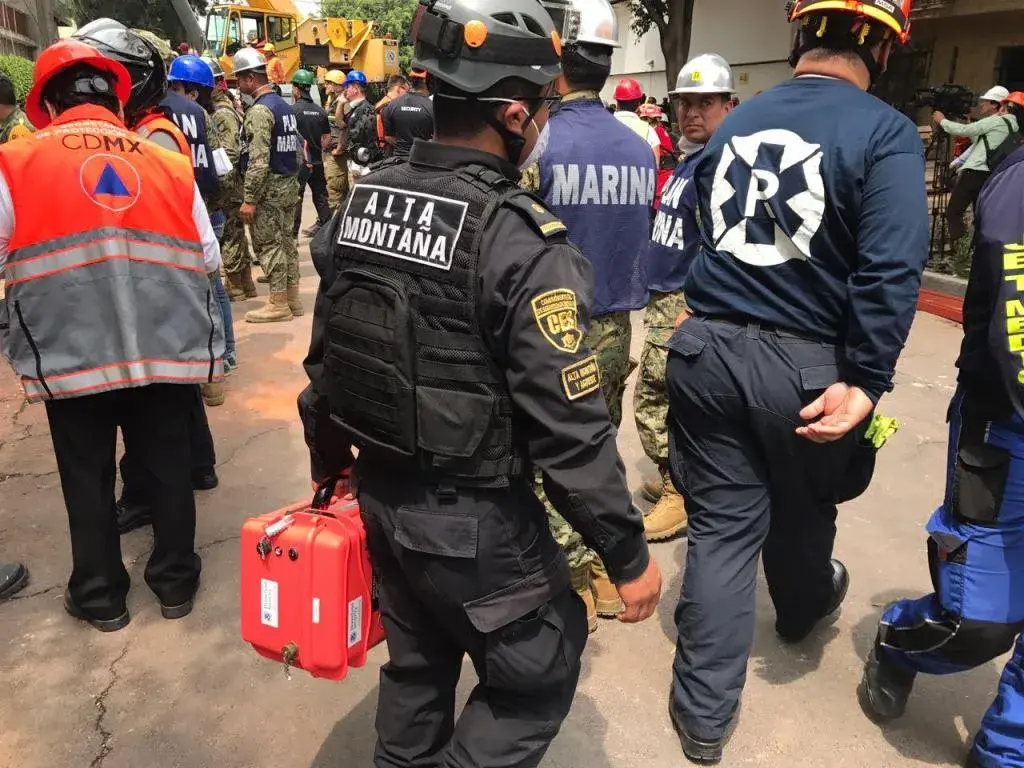Disaster relief workers searching for earthquake survivors in Mexico City are using technology developed by NASA's Jet Propulsion Laboratory and the Department of Homeland Security's (DHS) Science and Technology Directorate (S&T). FINDER, which stands for Finding Individuals for Disaster and Emergency Response, is a suitcase-sized radar instrument capable of detecting human heartbeats under rubble.
FINDER was developed as a collaboration between NASA's Jet Propulsion Laboratory in Pasadena, California, and the DHS Science and Technology Directorate in Washington, D.C. Read more about
Since 2015, two private companies have licensed the technology and taken it to disaster zones, training relief workers to use it and manufacturing new units.
"Our hearts go out to the people of Mexico," said Neil Chamberlain, task manager for FINDER at JPL. "We're glad to know our technology is being used to make a difference there." Mexico City was rocked Tuesday by a 7.1-magnitude earthquake.
As of Thursday, one of the licensees, a company called SpecOps Group Inc., was in Mexico City and actively searching for survivors. President and CEO Adrian Garulay said members of the company were escorted to the disaster site and connected with rescue workers.
A second company, R4 Incorporated, sold FINDER units to the fire department of Quito, Ecuador, after responding to an earthquake there last year. David Lewis, president and CEO of R4, said the Quito fire department had dispatched its units to Mexico City to aid in the search for victims.
Lewis was in Puerto Rico earlier last week using FINDER to search for survivors of Hurricane Maria. Hurricanes are a relatively new use case for the technology, Lewis said: while radar can't search through water, it's useful for detecting heartbeats through rooftops. People trapped in flooded buildings often run to the upper floors. He said they didn't find anyone in the day or so that they used FINDER.
"This is one of those instances when we have developed a technology we hope will never be needed," said DHS Under Secretary (acting) for Science and Technology William N. Bryan. “But it’s good to know it’s out there when we unfortunately have to use it."
The technology evolved from JPL’s efforts to develop low-cost small spacecraft radios, and uses signal processing developed to measure small changes in spacecraft motion. FINDER sends a low-powered microwave signal -- about one-thousandth of a cell phone's output -- through rubble. It looks for changes in the reflections of those signals coming back from tiny motions caused by victims' breathing and heartbeats. In tests, FINDER has detected heartbeats through 30 feet of rubble or solid concrete.
Both companies work with the direction of local governments when they travel to disaster sites. FINDER is used alongside a variety of other techniques, including trained dogs, acoustic sensing devices and thermal imagers. All these techniques are usually deployed together.
When FINDER was deployed to Nepal in 2015, it helped find four men trapped under a collapsed textile factory. Lewis said it's hard to confirm exactly how many lives the technology has saved in total, since he doesn't have data from relief teams that have purchased their own units, and it's often used in conjunction with other methods.
Read the fact sheet about the FINDER technology Detecting Heartbeats in Rubble and Rescuing Victims of Disasters.
###
Photo Information: Troy Hubschmitt, product manager at SpecOps Group, Inc., with a FINDER radar unit in Mexico City. An emergency responder in Mexico City carries an orange case holding a radar instrument called FINDER. This technology can detect the heartbeats of earthquake survivors buried under rubble. It was developed in a collaboration between NASA's Jet Propulsion Laboratory and the Department of Homeland Security's Science and Technology Directorate, then licensed to private companies like SpecOps Group, Inc. Image Credit: SpecOps Group, Inc
Andrew Good
Jet Propulsion Laboratory, Pasadena, Calif.
818-393-2433
andrew.c.good@jpl.nasa.gov
John Verrico
DHS Science and Technology Directorate
202-254-2385
john.verrico@hq.dhs.gov
